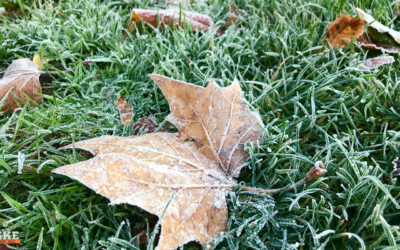As the snow melts and the grass starts growing again, many Madison homeowners breathe a sigh of relief—spring is finally here. But as your lawn begins to wake up, so do some unwanted visitors. Grubs, ants, and other lawn-damaging pests start to emerge around late April, and if you’re not paying attention, they can quickly turn your green lawn into a patchy mess.
So how do you know if pests are bugging your lawn? And more importantly—when should you act, and when should you wait? Here’s a quick guide from Friske Lawn Care to help you identify early spring pest problems and protect your yard before they get out of hand.
1. Grubs: The Underground Invaders
Grubs are the larvae of beetles (usually June bugs or Japanese beetles) that live beneath the soil and feed on grassroots. In early spring, they begin moving closer to the surface and resume feeding after spending the winter below the frost line.
Early Signs of Grub Damage:
-
Grass feels spongy when you walk on it.
-
Patches of grass turn brown or peel back easily, like a carpet.
-
Birds, skunks, or raccoons are tearing up your lawn looking for snacks.
When to Act:
Grubs are most effectively treated in late summer when they are newly hatched and closest to the surface. However, if you see significant spring damage or find five or more grubs per square foot, a spring treatment may be necessary to prevent further decline.
2. Ants: Small But Stubborn
Ants themselves don’t usually cause major harm to your lawn, but they can be a nuisance. They build visible mounds that can damage your mower and become a bigger problem if they start nesting near walkways or foundations.
Early Signs of Ant Activity:
-
Small dirt mounds in your lawn or between patio pavers.
-
Increased ant activity along driveways or sidewalks.
-
Grass dying near mound openings due to root disturbance.
When to Act:
If the mounds are isolated and not affecting your lawn’s health, you can wait or flatten them with a rake. If they start spreading rapidly or you notice ant trails inside your home, it’s time to take action with professional lawn-safe ant control.
3. Chinch Bugs: Tiny, Tough to Spot
These bugs may be small, but they can cause serious lawn damage by sucking moisture from grass blades and injecting them with toxins. They’re more common in hot, dry weather, but early populations can still start to grow in spring.
Early Signs of Chinch Bugs:
-
Yellow or brown patches of grass that don’t respond to watering.
-
Damage often appears near sidewalks, driveways, or sunny spots.
-
When you part the grass, you might spot tiny black bugs with white wings.
When to Act:
If you suspect chinch bugs, don’t wait—early intervention is key. Treatments are most effective before populations explode in the summer heat.
4. Earthworms: Friend, Not Foe
You might notice mounds or castings on your lawn this time of year, especially after rain. Don’t worry—those are likely from earthworms, and they’re actually helping your lawn by improving soil structure and nutrient cycling.
When to Act:
Don’t! Earthworms are beneficial, and while their castings can be a bit messy, they’re a sign of a healthy lawn ecosystem.
Final Thoughts: Know When to Watch, and When to Call
Spring pests don’t always mean disaster—but early signs should never be ignored. Whether you’re seeing brown patches, spongy spots, or strange mounds, it’s worth investigating before things get worse.
While Friske Lawn Care doesn’t offer pest control services, we’re happy to take a look, help identify what might be going on, and offer advice on next steps to keep your lawn healthy. Sometimes the issue isn’t pests at all—and we can help you figure that out.
Need a hand assessing your lawn this spring? Give us a call—your grass will thank you.




